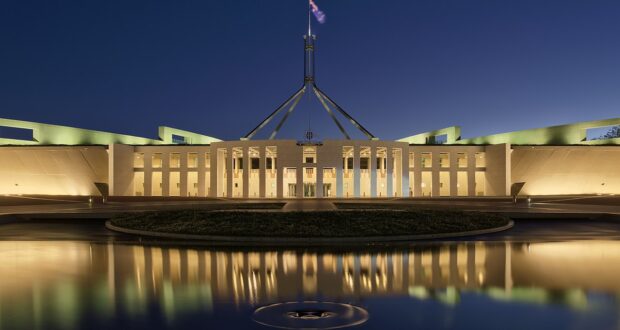28 May, 2021
By Jessica Honan – Research Assistant
Unlike other liberal democracies, Australia’s legal protection of human rights is not through a Bill of Rights or human rights legislation, but through various Constitutional, common law and statutory protections. Australians are afforded five explicit rights in the Constitution – the right to vote (Section 41), protection against acquisition of property on unjust terms (Section 51 (xxxi)), the right to a trial by jury (Section 80), freedom of religion (Section 116) and prohibition of discrimination on the basis of State of residency (Section 117).
Aside from these five explicit and Constitutionally enshrined rights, Australians are not empowered with individual positive rights – instead, human rights are purported to be protected by outlawing certain behaviour. Most rights-based legislation, like the Racial Discrimination Act 1975, is anti-discrimination law. However, rather than conferring positive rights, it – and other anti-discrimination law – outlaw rights-infringing behaviour. The Australian High Court has interpreted the Australian Constitution as protecting political and legal freedoms by virtue of the existence of a parliamentary democracy in Australia. Again, this is not a positive empowerment of rights, but rather a limitation on parliament’s legislative power.
A further limitation to Australia’s legislation-based model is that rights are not positively entrenched – that is, the legislature has power to interfere with legislation by enacting new and amending legislation. Australia’s human rights model involves legislative supremacy – that is, the legislature is responsible for creating and modifying human rights rather than the executive or judiciary. The legislature’s control over rights in Australia politicises rights dialogue and leads to rights changing with political climates. As the legislature is elected by the majority, an element of majoritarianism will always exist in parliamentary discussion, including that on rights. When human rights are not in the majority’s best interest, their protections will be neglected. This can be exemplified by Australia’s policy of compulsory detention of refuges – although a clear breach of international human rights standards, refugees are not in the majority in Australia, so the human rights issue is overshadowed by majoritarian issues.
In contrast, the American ‘Strong-Form Bill of Rights model’ involves human rights protections enshrined in the Constitution (that is, the American Bill of Rights), which are then protected by the judiciary. In theory, the Strong-Form model is not necessarily majoritarian because it relies on the judiciary interpreting the Constitutional rights. For example, democratic organs (like the legislature) have no power to change the entrenched American Bill of Rights. However, in practice in the USA, judges are selected based on partisan politics, meaning they very often represent the majority political party’s views, who are theoretically also representative of the majority in society in a democratic system. Not only does this mean Human rights interpretation is majoritarian, but also that the politics of rights is present in judicial reasoning – a clear contravention of the Separation of Powers.
Furthermore, the Strong-Form model has little scope to expand rights as society’s values progress. In the US, the Second Amendment – the right to ‘bear arms’ – may have been pertinent in the context in which it was drafted. However, it has not adapted to the realities of twenty-first century weaponry and its potential to infringe on other individuals’ right to life. This counter-majoritarian nature can be construed as undemocratic and unfitting of a liberal democracy.
Another alternate model is a Weak-Form model, as in New Zealand. This model involves an enshrined rights document (constitutional or statutory), but the courts and parliament share responsibility for interpretation and enforcement. This model maintains legislative supremacy, thus maintaining an element of democracy and therefore majoritarianism. However, it gives the judiciary scope to review alleged violations, thus ensuring rights are not overly politicised. Furthermore, as with the Strong-Form rights model in the USA, there is a benefit to explicitly stating human rights rather than the Australian model of outlawing others’ actions. Specifically, this benefit is that individuals are empowered with rights, meaning they have a greater scope of authority to demand their rights are respected and enforced.
This is demonstrated by the right to trial by jury in Australia and New Zealand. The language of section 80 of the Australian Constitution confers that trial by jury must occur as a matter of judicial procedure. In contrast, the New Zealand Bill of Rights Act empowers New Zealanders with an affirmative right to ‘the principles of natural justice’, and thus a trial by jury. The explicit articulation clearly sets parameters and definitions for rights and creates a system where the government must grant its citizens this right. Therefore, as the New Zealand Bill of Rights does not require the removal of power from the elected legislature, it precludes the government from infringing on the rights expounded in these bills whilst allowing the continuity of democratic integrity.
Based on this comparison, Australian human rights protections could be protected and democratic integrity maintained by implementing a Weak-Form Bill of Rights like in New Zealand. A model of entrenched, positive rights would narrow the scope for the government to arbitrarily interfere with individuals’ rights, and the amendment of the Australian Constitution to include positive human rights would limit the government’s ability to interfere with rights. Yet despite the benefit of introducing such rights-protections, the next step for implementing human rights protections into Australia will be overcoming the political and social unwillingness within Australia to introduce extensive rights-protections.
Image: Parliament House, Cambera, Australia (Source: Thennicke via CC BY-4.0)
 Human Security Centre Human Rights and International Security Research
Human Security Centre Human Rights and International Security Research




